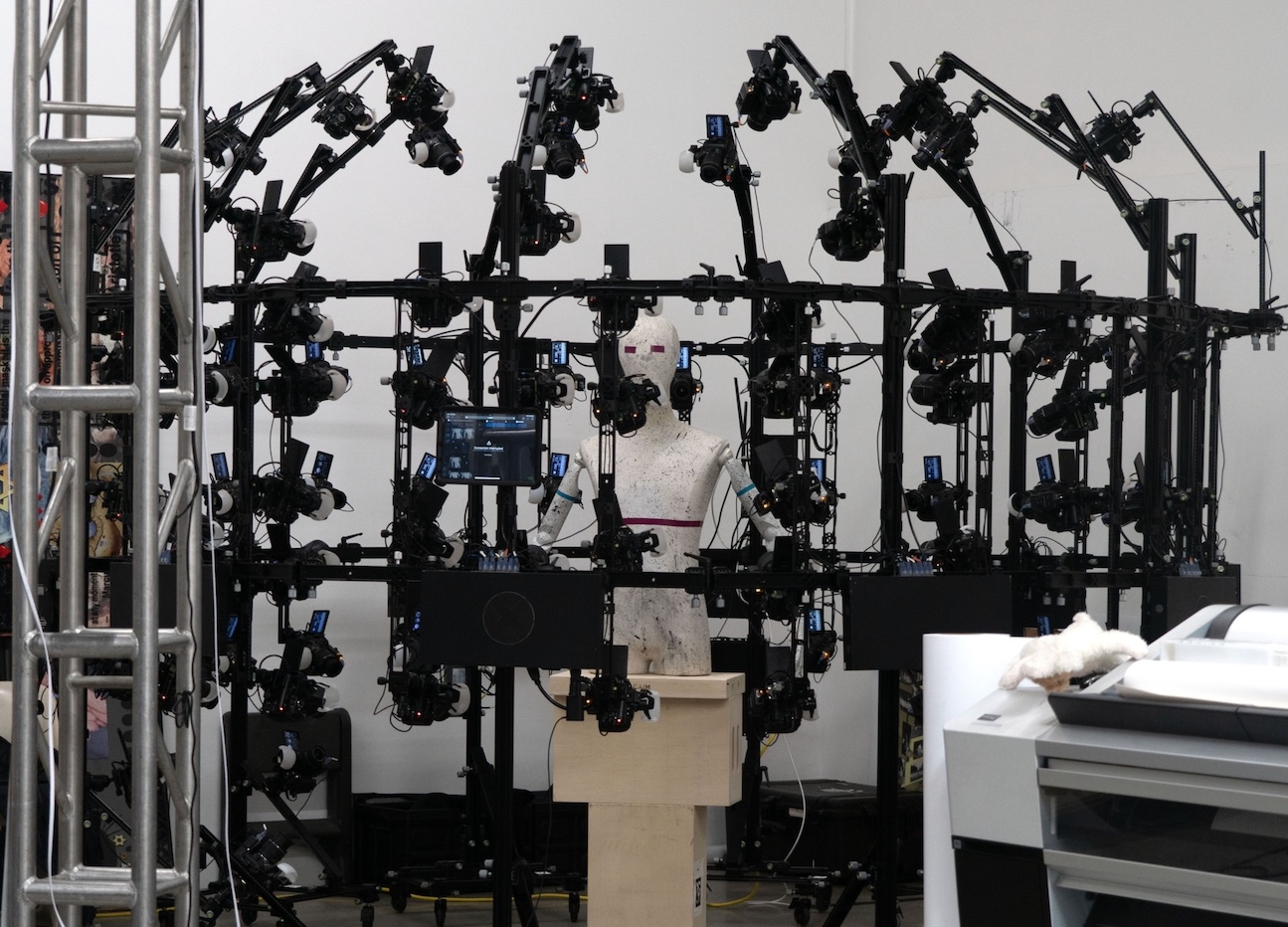
The Fondation Beyeler premieres Little Room, a new virtual reality (VR) installation by American artist Jordan Wolfson (*1980). This immersive work, on display for the first time at the Fondation Beyeler, invites visitors to step into an experimental environment where they play a central role in the unfolding experience.
In the Little Room installation at Fondation Beyeler, visitors are invited to step into an experimental environment where they play a central role in the unfolding experience.
Little Room explores the complex relationship between real, virtual, and imaginary worlds. Wolfson creates a space where these boundaries disappear, leaving visitors in an ever-changing environment that challenges the concept of what is truly “real.” Rather than simply recreating reality, the installation distorts and remixes perceptions, forcing participants to confront the instability of their own experience.
This immersive experience raises existential questions about the nature of existence itself. As you move through the shifting virtual landscape, your familiar sense of self begins to break apart. The use of full-body scans and perspective swapping amplifies this effect, prompting reflections on how identity is formed and perceived both internally and externally.
Wolfson’s work examines consciousness and identity by placing you in a flexible space where your physical presence merges with digital representations. This process challenges traditional ideas of individuality and self-awareness, encouraging you to rethink how consciousness functions when mediated through technology.
The blending of physical and virtual realities in Little Room serves as a metaphor for modern life, where digital interfaces increasingly shape human experience. Wolfson’s artistic perspective highlights these themes, inviting you to explore your own sense of being within an ever-changing web of perception and existence.
The Fondation Beyeler premieres “Little Room,” a new virtual reality (VR) installation by American artist Jordan Wolfson (*1980). This immersive work invites visitors to step into an experimental environment where they play a central role in the unfolding experience.
Jordan Wolfson’s artistic journey has taken him from creating video art to exploring the realm of virtual reality. This evolution showcases his innovative approach to storytelling, as he embraces new technologies and platforms to convey his artistic vision.
Wolfson’s work is known for pushing boundaries and challenging traditional artistic narratives. Through provocative themes and unconventional techniques, he invites viewers to question established norms and engage with complex ideas.
The influence of the advertising and technology industry on Wolfson’s distinctive style cannot be overlooked. His background in these fields has shaped his artistic practice, allowing him to incorporate various media forms into his work and create impactful experiences.
Jordan Wolfson’s evolution as an artist reflects a dynamic exploration of different mediums and techniques. His transition from video art to virtual reality demonstrates a commitment to pushing artistic boundaries and engaging audiences in thought-provoking ways. The influence of the advertising and technology industry on his work has shaped a unique storytelling approach that captivates viewers through immersive experiences. Wolfson’s ability to blend diverse media seamlessly underscores his status as a visionary artist who continues to redefine contemporary art practices.
Jordan Wolfson’s artistry is renowned for its ability to provoke strong emotional reactions and challenge societal norms through his thought-provoking artworks. His creations delve into unsettling works and explore controversial themes that push the boundaries of conventional art practices:
Wolfson’s pieces often elicit visceral responses from viewers, creating a profound impact on their emotional and psychological states. By incorporating elements that challenge traditional artistic expectations, he forces audiences to confront uncomfortable truths and question preconceived notions.
Through immersive explorations, Wolfson fearlessly tackles controversial subjects that many artists shy away from. By delving into taboo topics and societal issues, he sparks dialogue and introspection among viewers, challenging them to reevaluate their perspectives on complex themes.
Wolfson’s ability to intertwine unsettling aesthetics with controversial narratives sets him apart as a boundary-pushing artist who continuously challenges the status quo in the art world. His immersive explorations into uncomfortable territories force audiences to confront discomfort, prompting deep reflection and critical engagement with his provocative works.
Jordan Wolfson uses the power of VR technology to create unique experiences that go far beyond ordinary virtual reality encounters. In Little Room, VR is not just a tool but an active part of the artistic story, changing viewers into both onlookers and participants within a flexible virtual environment.
Wolfson redefines artistic boundaries by blending immersive storytelling with cutting-edge technology. His work moves beyond passive content consumption toward a participatory experience that unsettles and provokes. Emerging digital media become tools for exploring psychological and existential themes, pushing VR from entertainment or simulation into the realm of critical contemporary art.
This approach disrupts traditional notions of virtual reality art, which often focus on visual spectacle or escapism. Instead, Wolfson’s pioneering use of VR creates encounters that are deeply personal, disorienting, and intellectually engaging—highlighting the medium’s untapped capacity for challenging perceptions and expanding artistic expression.
The Fondation Beyeler premieres Little Room, a new virtual reality (VR) installation by American artist Jordan Wolfson (*1980). This immersive work, on display for the first time at the Fondation Beyeler, invites visitors to step into an experimental environment where they play a central role in the unfolding experience.
Partnerships with LUMA Foundation contribute to the success of the premiere.
Support from various foundations and collections enhances the exhibition’s impact.

